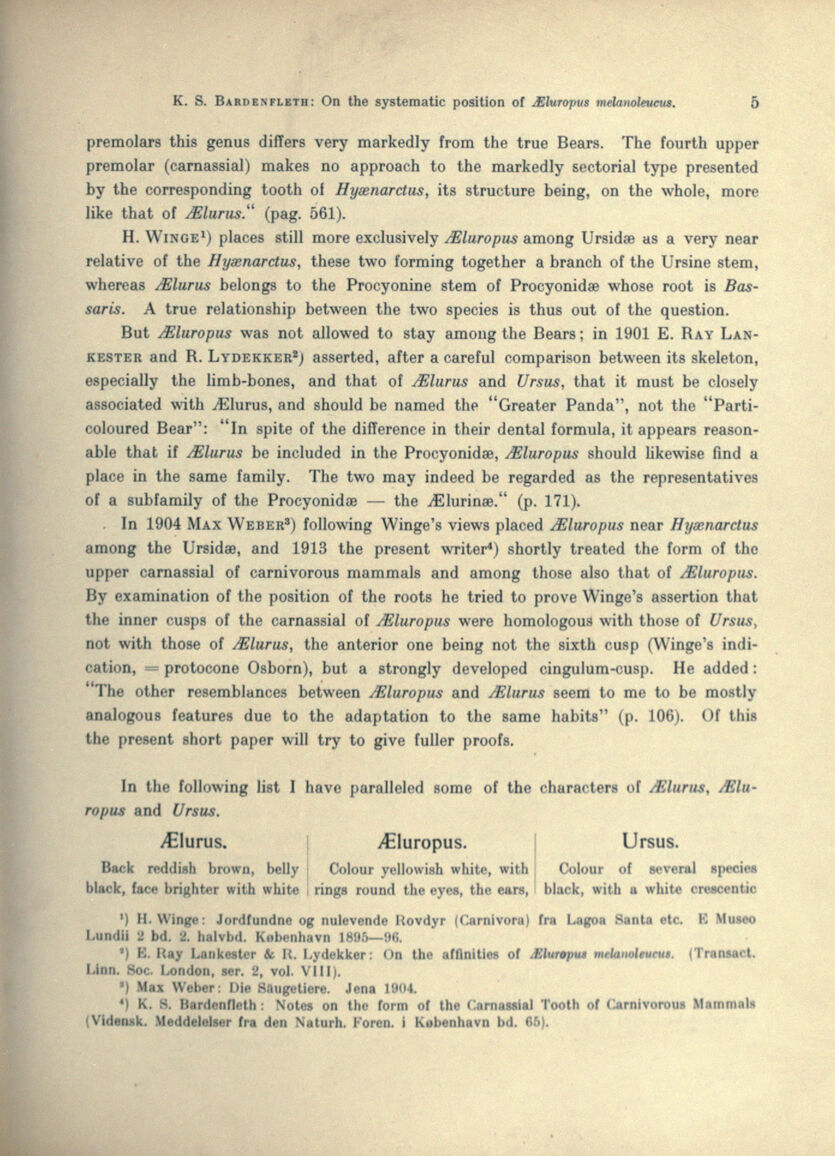
Full resolution (JPEG) - On this page / på denna sida - On the Systematic Position of Æluropus Melanoleucus

<< prev. page << föreg. sida << >> nästa sida >> next page >>
Below is the raw OCR text
from the above scanned image.
Do you see an error? Proofread the page now!
Här nedan syns maskintolkade texten från faksimilbilden ovan.
Ser du något fel? Korrekturläs sidan nu!
This page has been proofread at least once.
(diff)
(history)
Denna sida har korrekturlästs minst en gång.
(skillnad)
(historik)
premolars this genus differs very markedly from the true Bears. The fourth upper
premolar (carnassial) makes no approach to the markedly sectorial type presented
by the corresponding tooth of Hyænarctus, its structure being, on the whole, more
like that of Ælurus.“ (pag. 561).
H. Winge[1] places still more exclusively Æluropus among Ursidæ as a very near
relative of the Hyænarctus, these two forming together a branch of the Ursine stem,
whereas Ælurus belongs to the Procyonine stem of Procyonidæ whose root is
Bassaris. A true relationship between the two species is thus out of the question.
But Æluropus was not allowed to stay among the Bears; in 1901 E. Ray
Lankester and R. Lydekker[2] asserted, after a careful comparison between its skeleton,
especially the limb-bones, and that of Ælurus and Ursus, that it must be closely
associated with Ælurus, and should be named the “Greater Panda”, not the
“Particoloured Bear”: “In spite of the difference in their dental formula, it appears
reasonable that if Ælurus be included in the Procyonidæ, Æluropus should likewise find a
place in the same family. The two may indeed be regarded as the representatives
of a subfamily of the Procyonidæ — the Ælurinæ.“ (p. 171).
In 1904 Max Weber[3] following Winge’s views placed Æluropus near Hyænarctus
among the Ursidæ, and 1913 the present writer[4] shortly treated the form of the
upper carnassial of carnivorous mammals and among those also that of Æluropus.
By examination of the position of the roots he tried to prove Winge’s assertion that
the inner cusps of the carnassial of Æluropus were homologous with those of Ursus,
not with those of Ælurus, the anterior one being not the sixth cusp (Winge’s
indication, = protocone Osborn), but a strongly developed cingulum-cusp. He added:
“The other resemblances between Æluropus and Ælurus seem to me to be mostly
analogous features due to the adaptation to the same habits” (p. 106). Of this
the present short paper will try to give fuller proofs.
In the following list I have paralleled some of the characters of Ælurus,
Æluropus and Ursus.
| Ælurus. | | | Æluropus. | | | Ursus. |
| Back reddish brown, belly
black, face brighter with white | | | | Colour yellowish white, with
rings round the eyes, the ears, | | | | Colour of several species
black, with a white crescentic |
<< prev. page << föreg. sida << >> nästa sida >> next page >>